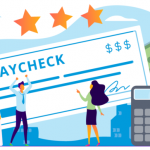- Like
- SHARE
- Digg
- Del
- Tumblr
- VKontakte
- Flattr
- Buffer
- Love This
- Save
- Odnoklassniki
- Meneame
- Blogger
- Amazon
- Yahoo Mail
- Gmail
- AOL
- Newsvine
- HackerNews
- Evernote
- MySpace
- Mail.ru
- Viadeo
- Line
- Comments
- Yummly
- SMS
- Viber
- Telegram
- JOIN
- Skype
- Facebook Messenger
- Kakao
- LiveJournal
- Yammer
- Edgar
- Fintel
- Mix
- Instapaper
- Copy Link
Whether you are a business owner, a professional, service provider, an educationist, a student, or a buyer, everyone suddenly seems to be in the middle of such a big technology storm. The use of internet-based solutions has revolutionized the way we conduct our daily life activities. As new apps and technologies roll out at such a fast pace each day, more and more vulnerabilities come into the light and are exploited by hackers to inflict serious losses to businesses. Bad internet security practices and lack of internet knowledge also account for serious data breaches carried out by hackers.
The Content Management System(CMS) has truly brought the ease of owning a blog or a website to reality, even for the most inexperienced users. Its user-friendly interface and ease of carrying out any future edits to the website, website design themes, innumerable plug-ins available to enhance various useful features make it most popular among internet users.
Among the most reputed CMS are WordPress, Joomla, Drupal, Magneto, SquareSpace, Wix, etc. With so much choice available concerning plans offered, security features, add-ons, choices of themes, each CMS has its own set of weaknesses and strengths. No doubt, the user is at an advantage to choose what suits them best. A study conducted by W3Techs observes that WordPress takes the top position of 41% among the world’s 10 million most frequented websites that use both CMS or not. Also, WordPress takes the major portion of the market share of 64.7% of all CMS platforms.
Although WordPress enjoys the topmost position among the popularity chart of CMS users, it is also the most hacked CMS. According to a study by Sucuri, among the websites that face most hacking attempts, WordPress again topped the chart with 94%.
So, these statistics do bring doubts in the users’ minds regarding the safety of the WordPress platform. But here, it is important to point out that WordPress in itself is not an unsafe platform. WordPress is an open-source platform, so a large community works around it to patch any security weaknesses as soon as they come across. Several developers in the WordPress team work tirelessly to update any security patches and fixes to stay ahead of any potential future cyber threats. As seen from the statistics above, WordPress being the most popular choice for users, falls prey to hacker’s foul play due to bad security practices of users as well, and a large number of plug-ins available for WordPress with its vulnerabilities form a weak link that the hackers use to carry out various complicated cyberattacks.
Then, what are those best WordPress Security Tips that will help you make your website security foolproof and help you ward off any potential cyber threats? Let me take you through some of these most productive security hacks to keep you protected from ever-increasing cyber threats.
Protect Your WordPress Website with The Best Security Of SSL Certificate
Strengthen your WordPress website security with SSL Certificate. SSL Certificate provides full protection to all your login and admin credentials by encrypting all the conversations between the user’s web browser and the webserver. It thus protects user’s sensitive data from any misuse by data breach caused by hacking attempts like Man-in-the-middle attacks. Once an SSL certificate is installed, the WordPress website changes its protocol from HTTP to secured HTTPS. A visual symbol of trust, a padlock, is introduced just before the URL of the website, which contributes a good deal in winning the trust of the visitors. Authentication of the website by SSL Certificate ensures that users are not directed to any spurious websites by hackers embedding malware into the website database. Google Search Engine also gives a better ranking to SSL secured WordPress websites on its Search Engine Results Page and hence better visibility, as a part of its security policy.
There are many reputed SSL Certificate providers in the market, such as Comodo, DigiCert, RapidSSL, and many more. Among them, Comodo SSL Certificates offer an array of choices of SSL Certificates catering to different security requirements and budgets. You may choose the best one that suits your specific needs and ensure a well-rounded, secure online environment for your users.
Choose a Reputed And Good Hosting Provider
You must put in some generous time researching for a good hosting provider and settle for the one that has the best security policy in place. Compare their plans, security features, reliability, and then only take a call. Check for WordPress support, and it should have a WordPress firewall in place. The host should have a proper WordPress website and account management system and server architecture to avoid cross-contamination from one infected website to the adjoining sites on the same server.
Also, check for security features like DDOS protection, consistent malware scanning, regular backups, automated software updates like security software, operating system, WordPress, etc. Settle only for a reputed hosting provider as this will ensure reliable and fast service.
Attend To Defending Your wp-config.php file
The wp-config.php file contains crucial details of your WordPress website’s database, configuration, and vital installation information of your website. Hence, safeguarding these files is immensely crucial to secure your WordPress website. This can be implemented by saving the Wp-config.php file to any folder; one step above the root directory can make it invisible to the hackers and secure your WordPress website.
Protect Your WordPress Account With Two-Factor-Authentication
Cracking the passwords with brute-force attacks and hacking into the WP accounts gives rise to an urgent need to secure your WP account with two-factor authentication. This process of authentication consists of a two-step verification of the WP account. The first step consists of verifying the password or username, and the second step calls for the verification of the login by, say sending in a verification code to your email or your phone. Some two-factor –authentication plug-ins are very widely used, like DUO Two-Factor Authentication, Google Authentication, etc.
Concentrate on Tightening Database Security
Paying attention to WordPress database security will protect you from any serious outcomes of any data breach caused by breaking into the database files of your WordPress website by hackers. This can be achieved in two steps, firstly by editing the default database name to an unpredictable database name like if your website name is rtc works, then the default database name would be wp_rtcworks. If you edit this default name, it will become difficult for hackers to identify and access database information. Secondly, you can raise the security level of your wp website also by not using the default database table prefix as wp_, but you could edit it to say 10xw_.
Conceal Your WordPress Version Number
It is a good practice to always conceal the latest version of the WordPress you are using from the hackers who can misuse this information and plan a specific cyberattack based on the vulnerabilities of the version you are using. The WordPress version is mentioned at the bottom of the dashboard and can also be found in the website’s source view.
The WordPress version number can be removed manually by adding this function to your functions.php file:
function wpbeginner_remove_version() {
return ”;
}
add_filter(‘the_generator’, ‘wpbeginner_remove_version’);
Protect Your Login Page
Secure your Login information from any hacking attempts as any breach could result in heavy damage to the WordPress website. Hackers, once able to insert malware into the configuration files, can carry out manipulations and bring down the entire website. Use strong passwords to protect login credentials. Use long passwords, which are a good combination of upper and lower case alphabets, numbers, and special characters. One important thing to secure your login page is to limit the login attempts, thus foiling the brute force attacks by hackers.
Pay Due Attention To User Account Management
Having multiple User accounts can sometimes pose to be a security threat to the WordPress website. It is always advisable to have a security policy that clearly defines the roles and access given to each of the users accessing the website. Access provided should be only restricted to the role-specific jobs and no more. It can be a good idea to give strong passwords to users with access to the website’s most crucial system files.
Change Your Admin Username To Secure Your WP website
Use a new username to protect your WordPress website instead of using the default ‘admin’ username. Using the default username will help hackers easily carry out a cyberattack. Move all the older posts to the new username and delete the older admin account from your WordPress website.
Be Regular With All Your Software Updates
It is vital to update to a newer version of your WordPress platform to protect from the older version’s vulnerabilities and secure your website against cyber attacks. The newest version helps you to improve your speed and user experience. You must also keep updating your WordPress themes and the plug-ins installed on your website. Any plug-ins that have not been used for long should be deleted as they make the whole of your WordPress website vulnerable to cyberattacks.
In conclusion, we can say that having a consistent security check of your website and incorporating the most effective WordPress security hacks discussed above into your daily security practices will help you prepare your WordPress website to fight against the most complex of potential cyber threats.


